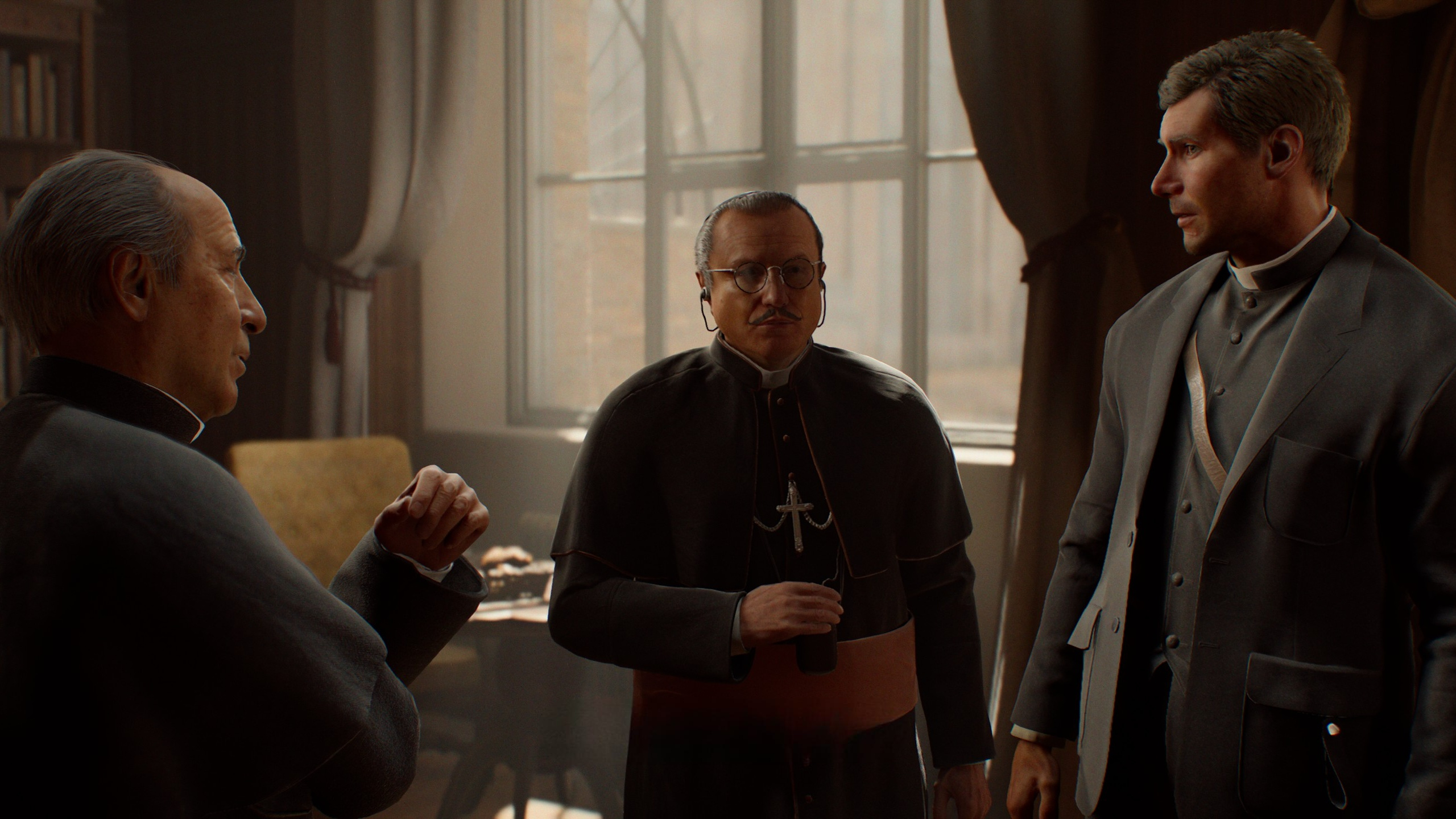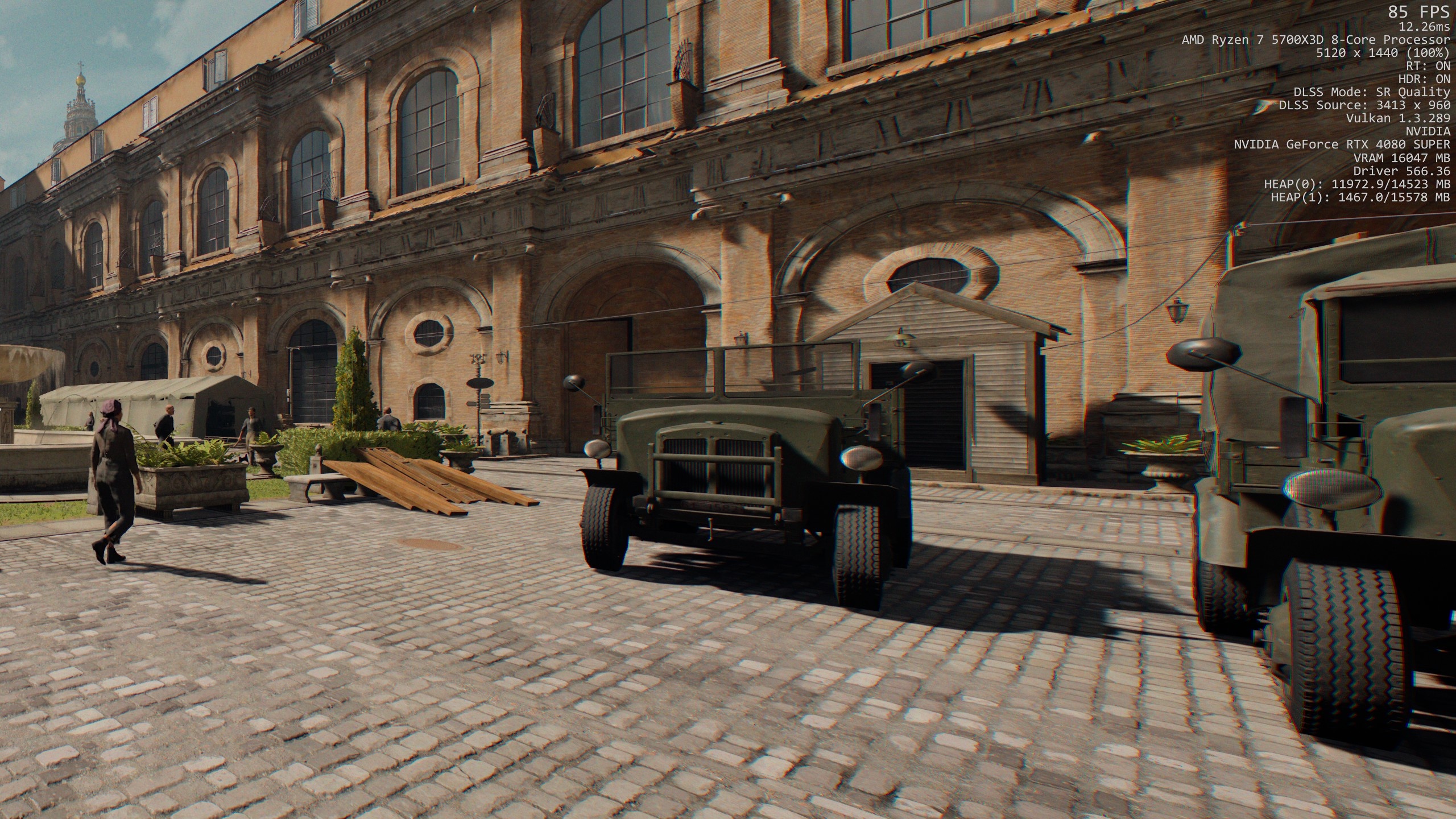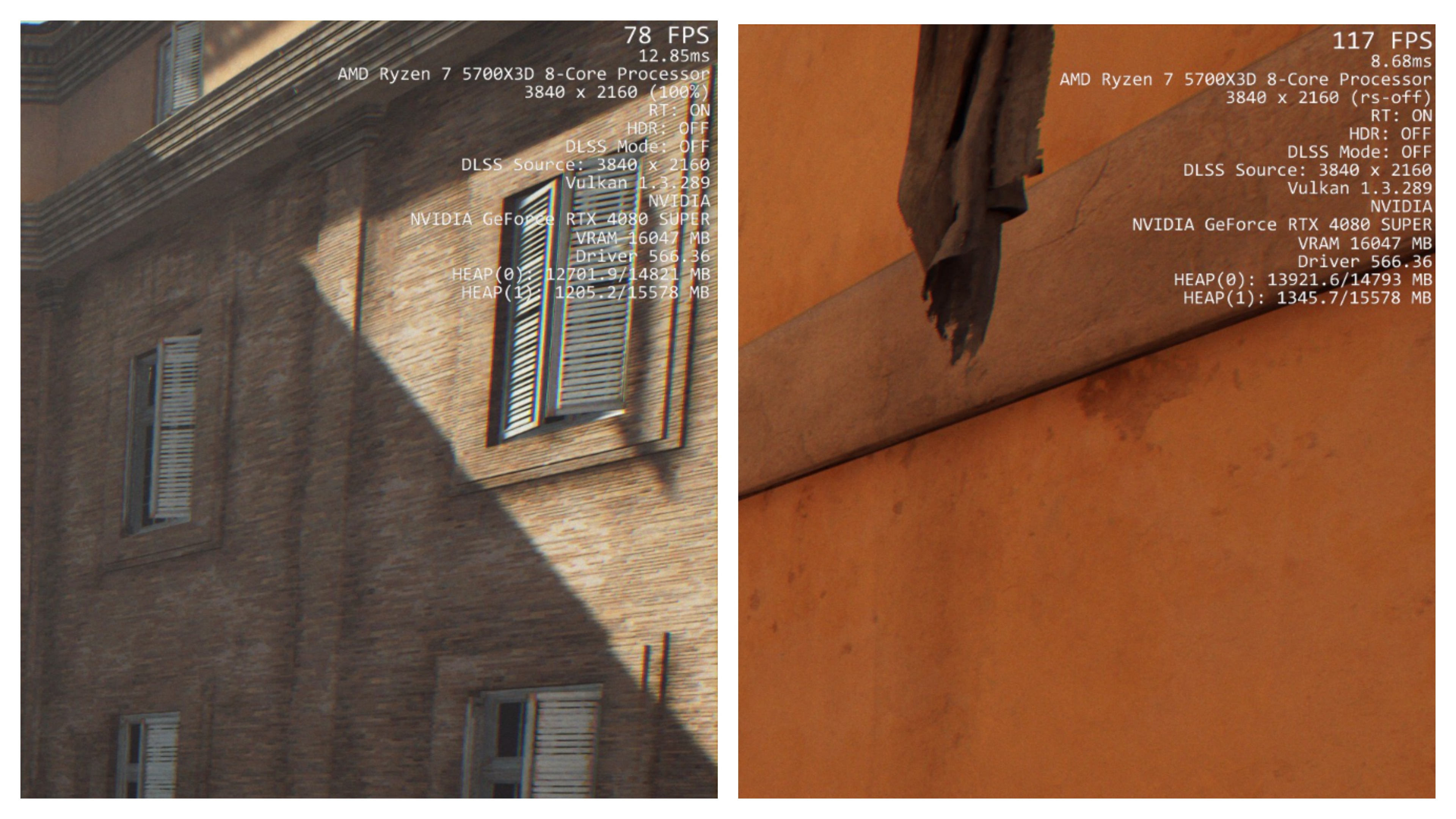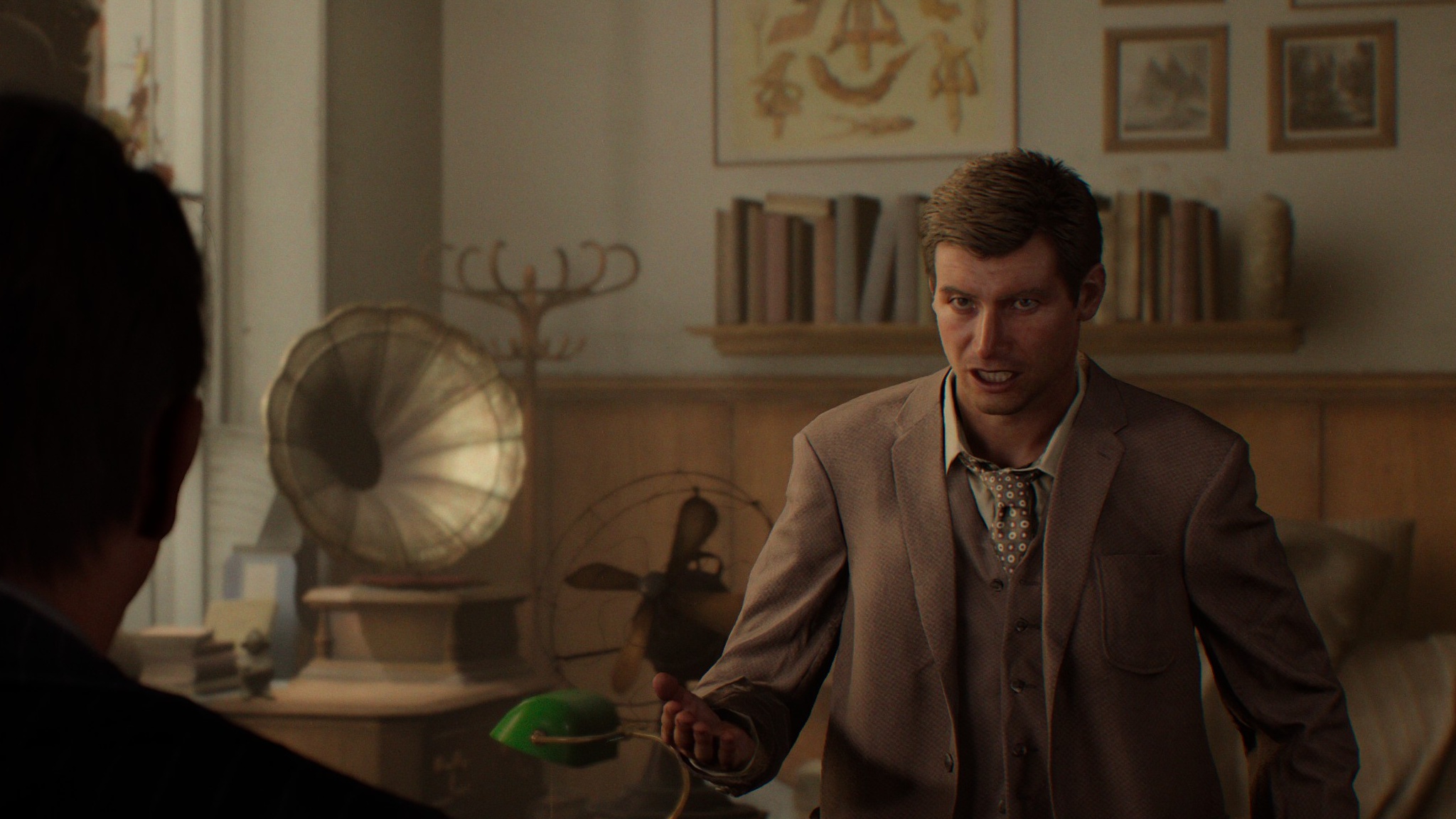
I was once a strong advocate for sticking with Nvidia's high-end RTX 3000 series GPUs (in my case the RTX 3080 Ti), but it turns out I was wrong. Using the Asus TUF RTX 4080 Super OC Edition graphics card across multiple titles has completely swayed my opinion on the matter, and out of everything I played, MachineGames' Indiana Jones and the Great Circle is the main reason why I'm recommending this GPU.
If you've ever wanted a GPU that truly offers a 'set and forget' experience, then the RTX 4080 Super is perfect - on maximum graphics settings at 5120x1440 (a demanding resolution for reference), I consistently attained frame rates between 85 and 100 frames per second with DLSS 'Quality' enabled. It gets much better when enabling Frame Generation (especially at 4K and 1440p which I'll dive into later on), which in some cases isn't a major necessity unless you have ray tracing or full path tracing on (and trust me, you'll want to leave that off in this game, as it absolutely tanks performance for very little benefit).
MachineGames' new title is an absolute treat to experience thanks to Nvidia's RTX 4080 Super powerhouse GPU - based on my experience here, I think this is the best way to experience triple-A games, and while it's still an expensive option, it comes without the cost of emptying your bank account for the RTX 4090.
Game code was provided by Nvidia.

5120x1440 Resolution
Using the ridiculously massive 49-inch ROG Swift PG49WCD OLED super ultrawide Asus sent to me for testing, the 4080 Super easily breezed its way through. As I mentioned previously, on maximum graphics settings, the Great Circle ran with hardly any performance issues - aside from the irritating occasional fall to 60fps once cutscenes were underway, I had an incredible time making my way through different environments.
Enabling DLSS quality and Frame Generation wasn't a necessity using this resolution (but it's great for a more consistent frame rate) - 5120x1440 is the closest to 4K in terms of the power demand from your GPU. The 4080 Super is a 4K powerhouse, and while this game's frame rate is very dependent on the scenery (whether it's daytime or nighttime), expect great results at this resolution, even though it's arguably an unconventional one.
My fellow ultrawide enthusiasts will be glad to hear that the 21:9 and 32:9 aspect ratios have native support here, but there's a catch if you plan on playing at 32:9 (5120x1440). When in-engine cutscenes are initiated (which is frequent during gameplay segments), an FOV issue leaves the scene zoomed in, ultimately cutting off massive portions of the screen.
While it's true that there's likely a very small number of gamers using the 5120x1440 resolution, it's still quite annoying to have to rely on modders to get the job done. That's exactly what resolved the issue for me, thanks to the user 'Lyall' on GitHub providing a fix for these sequences.
4K/3840x2160 Resolution
Now at 4K (3840x2160), this resolution's GPU demand actively made me seek out Frame Generation - native 4K with maximum graphics settings gave me at least 57fps with the highest at 78fps, though still impressive. This has fantastic image quality (native TAA) and great performance, and if you want an easy route to smoother performance here, just enable Frame Generation (this game can run FG without DLSS).
Doing so shoots performance up significantly, between 94fps and 113fps as pictured on the right below - ignore the 'RT on', as the in-game performance metric has this set as switched on constantly, even when it isn't. Bear in mind, my 4K test was done on a 4K 120Hz TV, so there's potential for your frame rate to move higher on a 144Hz monitor or above.
It's also important to note that at the time of writing, Frame Generation in the Great Circle is clearly borked - enabling this while adjusting other settings either drops the FPS to single digits or does nothing to increase the frame rate.

A simple restart after enabling frame-gen fixes this, but it became increasingly annoying when trying to assess performance across the board - sometimes changing settings would lead to hard crashes, forcing me to launch the game in safe mode and redo each setting.
Fortunately, all you need here for great performance at native 4K maximum settings is Frame Generation (when it decides to function), and you can also slightly decrease graphics settings if you want that smooth and consistent native experience without DLSS. If you're coming from an RTX 3000 series GPU like me, you'll appreciate the presence of FG not only in Indiana Jones but in multiple demanding titles too, notably Cyberpunk 2077.
1440p/2560x1440 Resolution
At 1440p (2560x1440), the RTX 4080 Super was shining at its best for me - native TAA (and DLAA when it doesn't cause a hard crash) with no FG runs flawlessly over 100fps, and is easily the best way to play Indiana Jones and the Great Circle with this GPU if you need that perfect balance of visual quality and high performance.
With this resolution and graphics preset, neither FG nor DLSS is necessary - this should stand as a strong indication of just how powerful the RTX 4080 Super is behind the RTX 4090. If you really do want to gain more FPS with the downside of increased latency, then FG and DLSS quality are the keys to this.
While this is a GPU built to tackle 4K gaming very effectively, 2560x1440 monitor owners will be glad to know that you'll be getting incredible results at maximum settings.

1080p/1920x1080 Resolution
Before I dive into this, I must stress that if you're using an RTX 4080 Super on a 1080p monitor, you're not going to get the best out of your hardware. For configurations as such with powerful GPUs, you're more than likely going to run into weird bottlenecks as many games become more CPU-dependent at lower resolutions (since the GPU isn't being pushed hard enough), and that's exactly what happened with this game.
At native 1080p maximum graphics settings, I couldn't get more than 100fps with an AMD Ryzen 7 5700X3D (which works great with this GPU at 4K) - this was worse than the performance results at 1440p, clearly indicating a bottleneck. However, enabling Frame Generation pushed performance close to 200fps, which makes sense since it's highly beneficial for CPU-bound scenarios.
Ray Tracing Performance
Ray tracing is where matters get a little ugly, mostly at 4K - since Frame Generation is buggy in the Great Circle as of now as aforementioned, it was difficult to fully assess ray tracing performance. This title is VRAM hungry when it comes to ray tracing and the texture pool size. Even after setting the latter to low quality at full path tracing with DLSS quality and Frame Generation enabled, I could not get more than 55fps.
Pushing DLSS down to performance did provide a bump up to around 65fps to 70fps, but again, this will likely not be consistent when moving into different locations or scenery.
This shouldn't come as a surprise, as the best GPU on the market, the RTX 4090, struggles with full path tracing with DLSS quality enabled, hardly achieving 60fps at 4K. The only way to use full path tracing with this RTX 4080 Super GPU and maintain decent performance and visual quality, is at 1440p with DLSS quality - which manages about 55 to 60fps.
Considering the massive performance hit that ray tracing has in this game and most triple-A games, I wouldn't recommend its use. If you're intent on doing so on this occasion, it would be best to avoid full path tracing completely and use the medium or high setting at 1440p.
When excluding the use of ray tracing, DLSS, or Frame Generation, the RTX 4080 Super is the right GPU to opt for across these resolutions (except for 1080p) - and the perfect addition to your setup for high performance in multiple games. Given that the RTX 4000 series could well see price drops after the inevitable RTX 5000 reveal, this could be the card to keep an eye on.
You might also like...
- If the Switch 2 can't perform at the same level as the Z1 Extreme Asus ROG Ally even with Nvidia's DLSS, then Nintendo is in trouble
- GPU sales have slumped badly as PC gamers wait for next-gen AMD and Nvidia graphics cards – and I don’t blame them
- Nvidia RTX 5090 and 5080 GPUs again rumored for CES – but suggestion the RTX 5080 could be positioned as a ‘professional’ GPU might worry PC gamers







